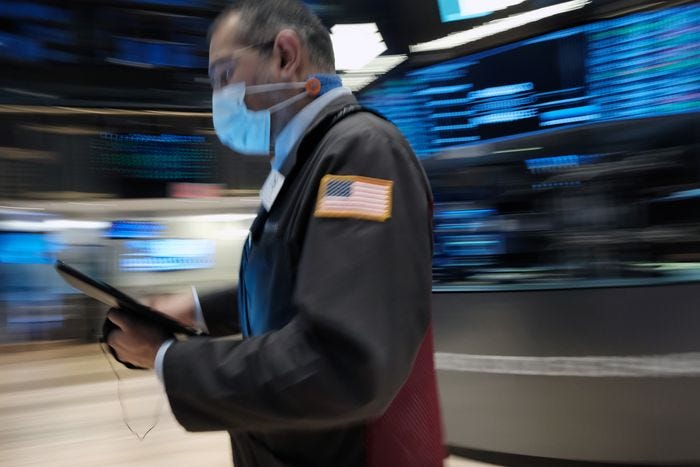The last two days of trading in US markets have been really wild. Of course, there are other days in history where we have seen bigger volatility and one-directional moves. But the last two days trading has been something special and I will tell you why. The closing numbers don’t tell you anything but what happened in between tells you a lot. Single-day swings like the markets had on Monday and Tuesday are very rare that they alone are reason to pause and think about what is ahead of us.
One thing I am not sure of is the direction of the market but one thing I am sure of is to be prepared for extreme volatility. On Monday the S&P 500 recovered from an intraday loss of almost 4% and finished the day positively. This was only the third time it ever happened in history. Both the other times it occurred was in Oct 2008 during the runup to the GFC. That is not much of a data point to hang on but that alone suggests more losses could happen over the next several months. On the other side, one should be encouraged by the recovery that occurred after those two historic days in October 2008.
What happened in October 2008? Stocks were already down about 30% from their 2007 highs but by November 2008 stocks fell another 25%. Finally, markets did not hit bottom until five months later in Mar 2009.
Books and movies have been made on what happened during the GFC as what happened then were unprecedented and legendary stories on the biggest losers and biggest winners of that time played on the psyche of the common man.
Current events are a warning and we have a little amount of precedent for the last two days of volatility. But it suggests that more losses are likely to happen for stocks over the next six months or so and we may have not yet seen a final bottom.
For the market to recover in the last two days of selling, it is amply clear that the retail crowd has been selling at the market open but the buying is done mostly by professionals. It’s natural for people to be afraid of what they don’t know. And never in history have we seen such colossal stimulus over the last two years. The Fed is carrying a $9 trillion balance sheet. The US government had sent thousands of dollars directly to all citizens. Inflation is rising to record levels. The Fed is already making preparations to take the stimulus out of the economy. It is no wonder if the retail crowd is concerned as they have no clue how this will all end up.
But to tell you the truth after the start of previous rate hike frenzies, the market actions led to gains in all the indices. The Fed hiked rates 17 times from Jun 2004 to mid-2006. But the S&P 500 soared over that period rallying almost 46% before it peaked in 2007. Stocks climbed even more from 2016 to 2020 in a Fed tightening cycle when the S&P 500 rallied about 80%.
So it is not the tightening that matters but under what conditions is the Fed tightening happening that matters. If the economic growth slows drastically while the Fed is hiking rates, then it is a different story.
As the FOMC is meeting today, the key market interest rate (10-year yield) is trading at 1.78% which is the same level it was at before the pandemic started. It will be very interesting to read into what the Fed Chairman has to say today in the press conference after the meeting. The Fed is dealing with a 5% growth economy and a higher than 7% inflation rate. Inflation is the problem and not tight money that is a threat to economic activity.
If you received value from this post, and you’d like to send some back, or if you’d like to signal to me to continue spending time on these types of explorations, feel free to buy me coffees (thank you!):
So, there we go. Thanks for reading Breezy Briefings. If you enjoyed this, I'd really appreciate it if you could take a second and tell a friend. Honestly. It makes such a big difference.
Forward this email. Recommend the newsletter. Share on Twitter, WhatsApp, Telegram, LinkedIn, Slack, wherever!
Join Breezy Briefings’ Official Telegram Channel: https://t.me/BreezyBriefings
Abraham George is a seasoned investment manager with more than 40 years of experience in trading & investment and multi-billion dollar portfolio management spanning diverse environments like banks (HSBC, ADCB), sovereign wealth fund (ADIA), a royal family office and a hedge fund. Currently, he is a co-founder of a new hedge fund where foreign citizens can invest in Indian growth stocks like Tanla operating in hyper-growth markets like CPaaS.



